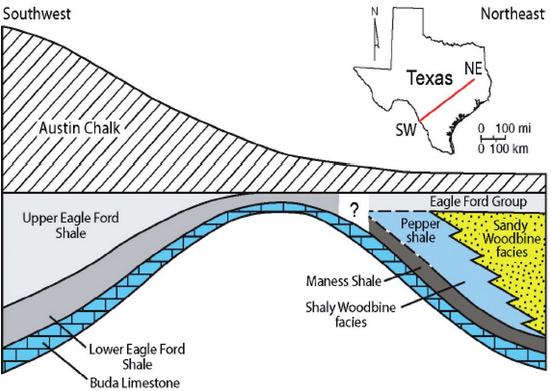Authors: Sturzu I. , Popovici A. M. , Pelissier M. A. , Wolak J. M. , and Moser T. J.
First Break, submitted in February 2014, accepted and in press.
Difraction Imaging is a novel technology that uses diffractions to determine the locations of the small subsurface elements that produced them, such as small scale faults, near surface scattering objects and in general all objects which are small compared to the wavelength of seismic waves. Diffraction imaging may:
(1) improve prospect characterization and pre-drill assessment of the local geology;
(2) improve production and recovery efficiency;
(3) reduce field development cost; and
(4) decrease environmental impact.
• Field development may be accomplished with fewer wells to optimally produce the reservoir using high-resolution images of small-scale fractures in shale or carbonate intervals. • Standard approaches to obtain high-resolution information, such as coherency analysis and structure-oriented filters, derive attributes from stacked, migrated images. • Diffraction imaging, in comparison, acts on the pre-stack data, and has the potential to focus super-resolution structural information. • Diffraction images can be used as a complement to the structural images produced by conventional reflection imaging techniques, by emphasizing small-scale structural elements that are difficult to interpret on a conventional depth image. • An efficient way to obtain diffraction images is to first separate the migration events according to the value of specularity angle, in a similar way to offset gathers, and subsequent post-stack processing. • The high-resolution potential is demonstrated by the diffraction images from the Kenedy survey over the Eagle Ford shales, which show much more detail than conventional depth migra-tion or coherence.
Introduction
In 200 shale gas represented just 1% of American natural gas supplies. Today, it is 30% and the percentage keeps increasing. The technology to drill and fracture shale formations is now exported from the US to the rest of the world, increasing national oil and gas reserves in many other countries. Currently, there is a high level of activity for both shale gas and liquids production. Productivity in the shale plays depends on many factors including total organic content, the susceptibility of the reservoir to hydraulic fracturing and factors in the well design and completion processes.

Figure 1 Cross section of Middle to Late Cretaceous rocks of south-central Texas.The Eagle Ford Formation pinches out to the northeast over the San Mancos Arch. (After Hentz and Ruppel, 2010).
However, since reservoir porosity is exclusively fracture porosity, the detection of naturally occurring faults and fractures and the interaction of these with the hydraulic
fracturing process are key areas of investigation. Continue Reading →
